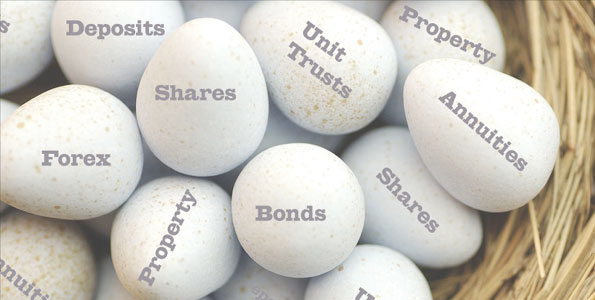
Of course we all know that CNBC's first priority is to increase rating to sell advertising, not to make you money. But this is a separate topic.
What is diversification?
According to Investopedia, diversification is "A risk management technique that mixes a wide variety of investments within a portfolio. The rationale behind this technique contends that a portfolio of different kinds of investments will, on average, yield higher returns and pose a lower risk than any individual investment found within the portfolio.
Diversification strives to smooth out unsystematic risk events in a portfolio so that the positive performance of some investments will neutralize the negative performance of others. Therefore, the benefits of diversification will hold only if the securities in the portfolio are not perfectly correlated."
According to Warren Buffett, "Put all your eggs in one basket and then watch that basket very carefully. Diversification is Protection against Ignorance" - which means that you diversify when you are not sufficiently confident to bet on which asset (or asset class) will do well and which will do poorly.
According to Mark Cuban, "Portfolio diversification is for idiots. You can't diversify enough to know what you're doing. You've got to do your homework and play your best bets"
According to Jason Sweig, "For anyone with a sustainable ability to identify the hottest investment of the moment, diversification is a mistake. But if you really believe you've got that ability, you're not just mistaken. You need to be hauled off in a straitjacket to the Institute for the Treatment of Investment Insanity. But when it comes to investing, there's only one sure bet: that sure bets don't exist."

So who is right?
Let's say you owned a nice diversified portfolio at the end of 2007. How would it help you?
- AAPL declined 60% from $200 to $80.
- CSCO declined 60% from $34 to $14.
- C declined 98% from $55 to $1.
- GOOG declined 66% from $750 to $260.
- GE declined 85% from $42 to $6.
- F declined 90% from $10 to $1.
Of course many of them recovered, but would you know to buy them at the bottom? And some of those stocks are still trading below 2007 levels.
But here is the biggest problem. As Bespoke Investment Group correctly point out, "One of the problems with diversification is that during times of turmoil, asset classes tend to become highly correlated, defeating the purpose of the diversification in the first place. This was especially true during the financial crisis in late 2008 when hedge funds and other asset managers were hit with massive redemptions. This caused even a safe haven like gold to fall along with everything else."
Diversification works well during bull markers, because securities tend to have low correlation - some of them will zig when others zag. But during bull markets you don't really need to be diversified - most stocks will go up anyway, or you can just buy a broadly diversified ETF lile SPDR S&P 500 Trust ETF (NYSEARCA:SPY). But when a bear market arrives, all stocks start to move in the same direction. Just when diversification is needed the most, most stocks become highly correlated.
What is the solution?
As we always say, you can't control returns, only manage risk. I really dislike when people make trading sound like if you are really good at it you somehow have control over your returns. The only thing you can do is build a winning strategy (better yet, multiple winning strategies with low correlation) and then manage your risk and position size so that you stay in the game long enough to let your edge work out over the long term.
No single strategy is the holy grail. The key to long term success is to build your portfolio based on few different strategies with low correlation. Owning 20-30 different stocks from different industries is not diversification.
"By adding short and hedged investments to a portfolio in a systematic way diversification is significantly increased. 2008 is a recent historical example where a global sell-off can cause correlations among asset classes to reach unusually high levels. When virtually every major asset class goes down, a portfolio diversified only by owning different asset classes can still experience large losses that can cause many investors to abandon their long-term plan. Diversifying across strategies helps mitigate this risk.
The idea of a diversified portfolio is not to beat a benchmark like the S&P 500. Diversification is about building a portfolio for the maximum potential return with the least risk. Diversification is about creating the most consistent equity curve possible. In Geek Speak, we're talking about maximizing our Sharpe Ratio. To do that, diversification requires unrelated strategies. Unrelated strategies ensure that in the short term there will almost always be something in your portfolio that you love and something that you hate. Creating a robust portfolio is a form of 'alpha' in itself." - Jesse Blom
Want to join our winning team?



There are no comments to display.
Join the conversation
You can post now and register later. If you have an account, sign in now to post with your account.
Note: Your post will require moderator approval before it will be visible.